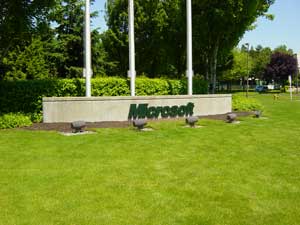A little while ago I promised to write about my internships at Microsoft, so here's the first post. As you may have read on my blog, I've had two internships in the Microsoft SQL Server Team in Redmond the last two summers, so I thought I could write a few words about what it's like to have an internship at Microsoft and how to get one.
So how do you actually get an internship? If you're not so lucky that Microsoft call YOU, you start out by applying for one. As I applied from Norway, the process is probably a little different from what happens in the US.
My internship story actually started in the spring of 2005, in my first year at NTNU, the university where I study. I had just joined Microsoft Student Community NTNU, and had heard that Microsoft offered internships in their headquarters in Redmond. My first thought was that this was way out of my league, and I didn't plan to apply. Then I talked to the ADE (Academic Developer Evangelist) in Microsoft Norway after a Student Community event, and he encouraged me to apply. I ended up spending the following night polishing my CV, before submitting it to Microsoft Norway the morning after.
A few days later, I got a call from Microsoft Norway, where they said that they wanted me in for a screening interview. They flew me to Oslo and interviewed me, but unfortunately, that year's story ended there, they didn't send me further on. In retrospect, I don't think that was a very bad decision actually - I'm not sure if I would have been ready for it at that time.
Then, in the spring of 2006, the story continued. Microsoft Norway were again accepting resumes and I submitted mine again, feeling a bit more ready this time. Now I got past the screening process in Norway, and I was invited for interviewing in Paris, France by Microsoft Corp. They sent me an email with some links about software testing and some words about how to prepare.
I was super-excited when I got the email, but at the same time also quite frightened. Microsoft wanted to fly ME to Paris for a weekend and interview me, just a year and a half into college. First, this was my first real job interview - and second, it was going to happen in a few weeks time - in English! At that time I hadn't really been using my English much in real life, and now I was going to do a programming interview in English...
Stay tuned for Part 2 - Interviewing with Microsoft.
Before I end, I have a few points about writing a resume when applying for a programming job. I'm no expert myself, but this is at least what I think and what I though about when writing my resume.
- The resume is your point of entry to the interview - it is the only thing they will see when making their decision about whether to call you in for an interview or not. Make sure it's perfect!
- You have to sell yourself - the resume is your personal ad. Include the good things about yourself and not the bad things (but don't lie).
- Make sure it shows that you have Passion for Technology. This is what most companies look for. If you like testing the latest betas of Visual Studio and SQL Server - mention it. If you're participating in open source projects - tell which ones...
- I would expect a decent looking resume from a programmer - spend some time making your resume look nice. Not super-fancy, but nice.
- DO NOT lie. If you've barely touched C++, don't write that you're an experienced C++ programmer. If the the interviewer unveils it, he or she will question the rest of your resume.
- Include your grades (or grade average) if they are good - if not, consider to provide them if/when they ask for it.
Joel Spolsky has a very interesting post about sorting resumes on his blog, "Joel on Software".